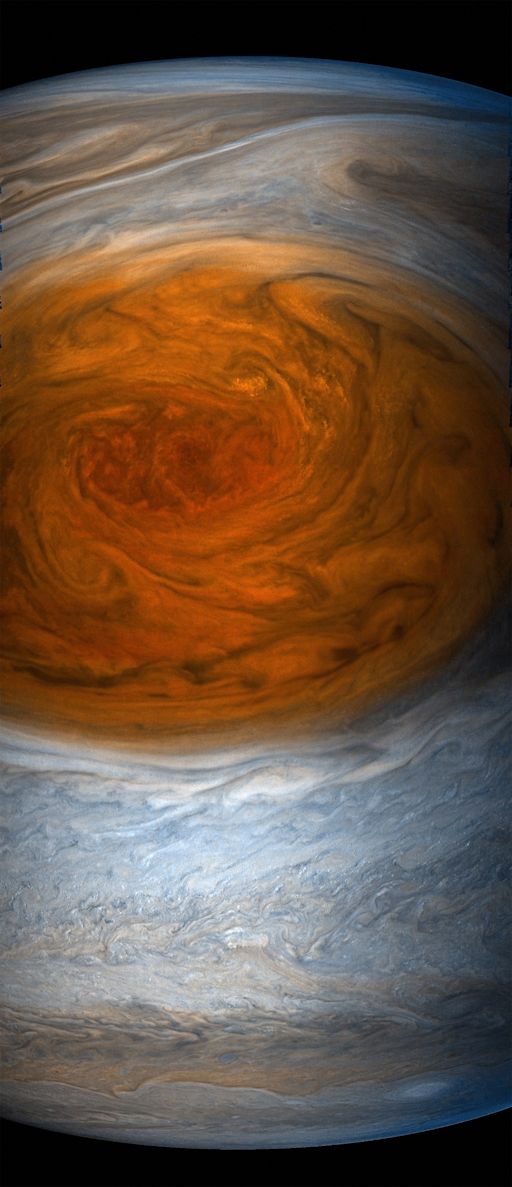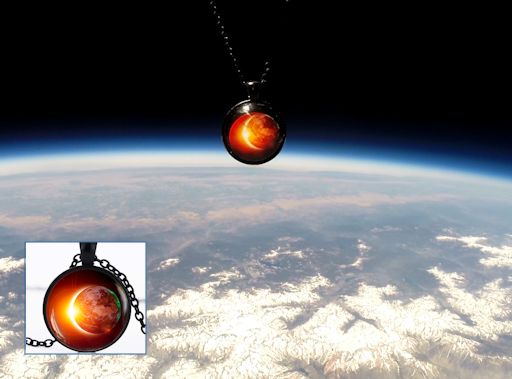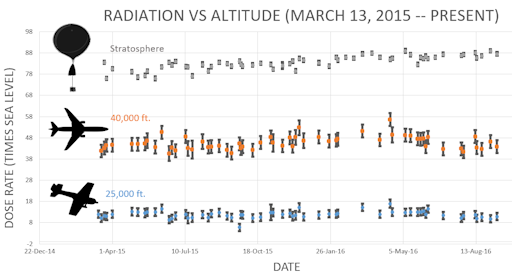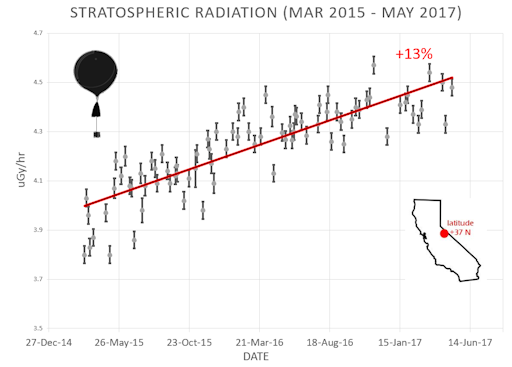Lights Over lapland is excited to announce that Autumn Aurora Adventures are available for immediate booking! Reserve your adventure of a lifetime in Abisko National Park, Sweden today! | | |
DECLINING CHANCE OF FLARES: Big sunspot AR2665 has decayed both in area and magnetic complexity. It no longer poses a significant threat for strong explosions. NOAA forecasters say there is a declining 15% chance of M-class solar flares on July 13th. Free: Solar Flare Alerts
INCREDIBLE IMAGES OF THE GREAT RED SPOT: On July 10th, NASA's Juno spacecraft swooped over the Great Red Spot of Jupiter, only 9000 km above its swirling cloudtops. First-look images have just been released. Behold, the biggest storm in the Solar System photographed from point blank range:

Image credit : NASA / SwRI / MSSS / Gerald Eichstädt / Seán Doran © public domain
NASA is doing something new with its data from Juno. Instead of reserving images for selected researchers alone, the agency is posting raw images as soon as they reach Earth. Members of the public are invited to examine and process them. Keep an eye on the Juno Image Processing Gallery for the latest submissions.
Realtime Space Weather Photo Gallery
A GIGANTIC JET OVER CHINA: Think of them as sprites on steroids: Gigantic Jets are lightning-like discharges that spring from the tops of thunderstorms, reaching all the way to the ionosphere some 80 km overhead. They're enormous and powerful. On July 4th, an all-sky camera in the Guangdong Meteor Observation Network detected this specimen over southern China:

"We have detected sprites before, but never a Gigantic Jet. It was fantastic," says Lyrics Shum, an astronomer who works with the Network. "According to our calculations, it stretched from an altitude of 15 km at the bottom to more than 87 km on top, and it lasted 0.32 seconds." The instigating storm was located offshore over the South China Sea.
"Gigantic Jets are much more rare than sprites," says Oscar van der Velde, a member of the Lightning Research Group at the Universitat Politècnica de Catalunya. "While sprites were discovered in 1989 and have since been photographed by the thousands, it was not until 2001-2002 that Gigantic Jets were first recorded from Puerto Rico and Taiwan." Only a few dozen Gigantic Jets have ever been seen, mostly over open ocean.
Amateur astronomers, you can contribute to Gigantic Jet research. Check your local weather radar map for storms just over the horizon, point your meteor cameras in that direction, and click. Gigantic Jets might not be as rare as we think.
Realtime Space Weather Photo Gallery
SOLAR ECLIPSE SPACE PENDANTS: Would you like to support our Solar Eclipse Balloon Network? Here's one way: Buy a space pendant. This solar eclipse-themed necklace flew to the stratosphere on July 2, 2017, attached to the payload of an Earth to Sky Calculus space weather balloon:

The payload contained more just like it. If you buy one now for $79.95, we will fly it back to the stratosphere during the Great American Solar Eclipse on August 21, 2017, where it will be enveloped by the Moon's cool shadow above our launch site in Oregon. No additional charge! Just make a note in the COMMENTS BOX of the shopping cart: "Please fly my pendant into the eclipse!" Each pendant comes with a greeting card showing the jewelry in flight and telling the story of its journey to the stratosphere and back again.
More items from the edge of space may be found in the Earth to Sky Store. All proceeds support atmospheric radiation monitoring and hands-on STEM education.
Far Out Gifts: Earth to Sky Store
All proceeds support hands-on STEM education
Realtime Noctilucent Cloud Photo Gallery
Realtime Aurora Photo Gallery
Every night, a network of
NASA all-sky cameras scans the skies above the United States for meteoritic fireballs. Automated software maintained by NASA's Meteoroid Environment Office calculates their orbits, velocity, penetration depth in Earth's atmosphere and many other characteristics. Daily results are presented here on Spaceweather.com.
On Jul. 13, 2017, the network reported 0 fireballs.
(0 sporadics)

In this diagram of the inner solar system, all of the fireball orbits intersect at a single point--Earth. The orbits are color-coded by velocity, from slow (red) to fast (blue). [Larger image] [movies]
Potentially Hazardous Asteroids (
PHAs) are space rocks larger than approximately 100m that can come closer to Earth than 0.05 AU. None of the known PHAs is on a collision course with our planet, although astronomers are finding
new ones all the time.
On July 13, 2017 there were 1803 potentially hazardous asteroids.
 |
Recent & Upcoming Earth-asteroid encounters: | Asteroid | Date(UT) | Miss Distance | Velocity (km/s) | Diameter (m) |
| 2017 MP7 | 2017-Jul-08 | 11 LD | 8.2 | 29 |
| 2017 NK2 | 2017-Jul-10 | 2.5 LD | 6.1 | 17 |
| 2017 MC4 | 2017-Jul-11 | 7.6 LD | 20.7 | 139 |
| 2017 NH | 2017-Jul-12 | 16.6 LD | 7.8 | 171 |
| 2017 NT5 | 2017-Jul-14 | 1.1 LD | 20.3 | 93 |
| 2017 MR8 | 2017-Jul-15 | 3.3 LD | 6.9 | 35 |
| 2007 MB4 | 2017-Jul-16 | 14.5 LD | 9.6 | 107 |
| 2017 NS5 | 2017-Jul-17 | 13.5 LD | 22.7 | 286 |
| 2017 BS5 | 2017-Jul-23 | 3.1 LD | 5.8 | 54 |
| 2011 CC22 | 2017-Aug-04 | 15.5 LD | 18.4 | 186 |
| 2014 OA339 | 2017-Aug-13 | 12.3 LD | 10 | 47 |
| 3122 | 2017-Sep-01 | 18.5 LD | 13.5 | 5376 |
Notes: LD means "Lunar Distance." 1 LD = 384,401 km, the distance between Earth and the Moon. 1 LD also equals 0.00256 AU. MAG is the visual magnitude of the asteroid on the date of closest approach. | | Cosmic Rays in the Atmosphere |
Readers, thank you for your patience while we continue to develop this new section of Spaceweather.com. We've been working to streamline our data reduction, allowing us to post results from balloon flights much more rapidly, and we have developed a new data product, shown here:

This plot displays radiation measurements not only in the stratosphere, but also at aviation altitudes. Dose rates are expessed as multiples of sea level. For instance, we see that boarding a plane that flies at 25,000 feet exposes passengers to dose rates ~10x higher than sea level. At 40,000 feet, the multiplier is closer to 50x. These measurements are made by our usual cosmic ray payload as it passes through aviation altitudes en route to the stratosphere over California.
What is this all about? Approximately once a week, Spaceweather.com and the students of Earth to Sky Calculus fly space weather balloons to the stratosphere over California. These balloons are equipped with radiation sensors that detect cosmic rays, a surprisingly "down to Earth" form of space weather. Cosmic rays can seed clouds, trigger lightning, and penetrate commercial airplanes. Furthermore, there are studies ( #1, #2, #3, #4) linking cosmic rays with cardiac arrhythmias and sudden cardiac death in the general population. Our latest measurements show that cosmic rays are intensifying, with an increase of more than 13% since 2015:

Why are cosmic rays intensifying? The main reason is the sun. Solar storm clouds such as coronal mass ejections (CMEs) sweep aside cosmic rays when they pass by Earth. During Solar Maximum, CMEs are abundant and cosmic rays are held at bay. Now, however, the solar cycle is swinging toward Solar Minimum, allowing cosmic rays to return. Another reason could be the weakening of Earth's magnetic field, which helps protect us from deep-space radiation.
The radiation sensors onboard our helium balloons detect X-rays and gamma-rays in the energy range 10 keV to 20 MeV. These energies span the range of medical X-ray machines and airport security scanners.
The data points in the graph above correspond to the peak of the Reneger-Pfotzer maximum, which lies about 67,000 feet above central California. When cosmic rays crash into Earth's atmosphere, they produce a spray of secondary particles that is most intense at the entrance to the stratosphere. Physicists Eric Reneger and Georg Pfotzer discovered the maximum using balloons in the 1930s and it is what we are measuring today.
| | The official U.S. government space weather bureau |
| | The first place to look for information about sundogs, pillars, rainbows and related phenomena. |
| | Researchers call it a "Hubble for the sun." SDO is the most advanced solar observatory ever. |
| | 3D views of the sun from NASA's Solar and Terrestrial Relations Observatory |
| | Realtime and archival images of the Sun from SOHO. |
| | from the NOAA Space Environment Center |
| | a proud supporter of science education and Spaceweather.com |
| | fun to read, but should be taken with a grain of salt! Forecasts looking ahead more than a few days are often wrong. |
| | from the NOAA Space Environment Center |
| | the underlying science of space weather |
 | Beautyz for top beauty products reviews and their buying guides |
 | Reviews here can help you to pick up best memory foam mattresses. |
| | These links help Spaceweather.com stay online. Thank you to our supporters! |
| | | | | | |

